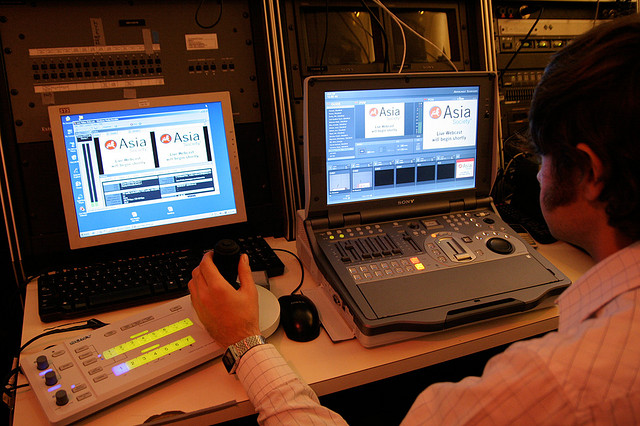
Image: Asia Society
Live webcasting has become an indispensable marketing and communication tool for organizations looking to extend the reach of live events to a broader audience of members, prospects and clients. In the past five years dozens of technology companies were launched to solve the then-critical webcasting challenges – ease of audience access and consistent webcast quality.
Anyone who has hosted a live webcast understands the white-knuckle moment when the event starts and the question, “will the webcasting technology work,” is answered. Fortunately, like all technology, the back-end of webcasting has not only improved dramatically, but the cost has also declined.
Today, there are many capable webcasting platforms each of which provide chat, polling, social media and slide presentation capabilities. When a webcast goes live, the technology simply works.
Perhaps it’s time for webcasters to shift their focus away from the technology of webcasting to the quality of the webcast production.
A webcast, like any televised event, needs to entertain if it hopes to educate or persuade. With the technology problem solved, how you produce, direct and present your story has become the most important challenge for webcasters.
Here are three ways to dramatically improve the engagement quality of your next live webcast.
1. Set your production value sights high and use broadcast television as your point of reference. Whether a panel discussion with five people, or a single keynote speaker, webcasts of a live event should strive to match the quality of a network broadcast. Like any broadcast, your production should be blocked into story segments with a beginning, middle and end. You should also pre-plan transitions, whether it’s the moderator introducing panelists from a slide, or the panelists sharing a few thoughts about themselves.
2. Bring your video production team in early into the planning stage of the event. The event producer is focused solely on creating an extraordinary experience for those attending the live event. He is not thinking about the needs of your webcast. Because it is likely that you will be sharing the event technology, such as tapping into the house audio feed and slide and video presentations, meeting and planning with the event producer early on will pay big dividends. Connectivity to the venue’s broadband internet connection and testing bandwidth is vital to your event success – make arrangements well in advance to do this. Last minute provision gives no time for troubleshooting or finding an alternate path out. Better yet, order your own dedicated service to ensure you’re not competing with other broadband traffic.
3. There is no such thing as being over-prepared when you are producing a broadcast-quality event. In addition to meeting early with the event producer and previewing the spaces where the webcasts will take place, take the time to rehearse with the event team, if possible. When they are in the space testing equipment, be there as well so that you can perform a thorough tech-check of your webcast production infrastructure.
Most organizations invest tens of thousands of dollars producing live events. With the technology of webcasting both reliable and increasingly inexpensive, focusing on the engagement quality of the production will pay the largest dividends. By aspiring to make your production broadcast quality, your event will receive a more positive response from remote attendees and after-event viewers.

